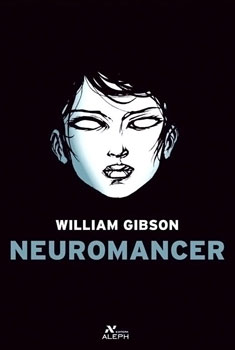From the
Telegraph review (Helen Brown).
"Ursula Todd is born on February 11 1910. The doctor and midwife are stuck in the snow and the umbilical cord is wrapped around her neck. We feel the panic of “Little lungs, like dragonfly wings failing to inflate in the foreign atmosphere. No wind in the strangled pipe. The buzzing of a thousand bees in the tiny curled pearl of an ear.” Darkness falls. The page is turned. The birth replayed. This time Dr Fellowes arrives in time to prevent tragedy – although he’s brisk about his miracle, being the kind of man whose “patients, particularly their exits and entrances, seemed designed to annoy him”.
"There follows a storybook childhood near Beaconsfield with tennis on the lawn and Mrs Glover’s beef collops and plum pudding for tea. Ursula is the child of Sylvie and Hugh Todd whose Lutyens-esque home (surrounded by a Merchant Ivory checklist of meadow, copse and bluebell wood with a stream running through it) is called “Fox Corner”. Ever the literary trickster, Atkinson has picked a name that echoes both A A Milne’s Pooh Corner and E. M. Forster’s Windy Corner as the hub of a book that plays a virtuoso game with the nature of fiction. For in this fox’s corner, the past is neither a foreign country nor a safe haven in which the rawness of human pain and frailty are bandaged by the charms of a vintage wardrobe department.
"This fox corner is a place where the flesh of the human inhabitants is as vulnerable as that of the chickens destined for Mrs Glover’s pot. The sweet peas rambling through the borders are tended by a man who has lost half his face in the Great War. He wears a tin mask with one eye painted on, permanently open.
In the various permutations of Ursula’s life, Atkinson’s cast fall victim to the kinds of horrors and accidents that every parent dreads. The slip from the roof. The paedophile in the lane. The Spanish flu, which leaves “a pale bloody kind of froth, like cuckoo spit” bubbling from a baby’s blue nostril and a mother grieving like a savage.
"Each time Ursula is reborn, she tries to prevent the traumas of previous lives. She’s not exactly conscious of what’s been before, but she feels looming dread and déjà vu. This leads her mother to pack her off to a psychologist who talks of Nietzsche and Amor fati (love of fate).
"In this way, the novel takes us through the two wars. Although Atkinson gets the period atmosphere so spot on you can smell the boiled cabbage, this is not a “wartime novel”. It’s more a case of Atkinson using war to demonstrate the haphazardness of history. Different incarnations see Ursula taking tea with Eva Braun and working as an ARP warden in London. As she drags bodies from the rubble – a friend’s seemingly undamaged torso comes apart “like a cracker” when she tries to lift it – we’re again reminded of our fleshly vulnerability.
"You’d think it would be wearing – unbearable, even – to keep reading the story of one life. But such is Atkinson’s skill that the retelling only builds our affection for and knowledge of the characters."
Perhaps I
do read so much science-fiction that my bar is set too low when it comes to the quality of 'real novels'. Yet "
Life after Life" has collected more enthusiastic acclaim than most books - plus some notable prizes. In a well-written novel, getting to know the characters like they're family is
meant to happen, so perhaps I shouldn't be too impressed that I have a warm and familiar sense of what it's like to be Ursula through all her life variants.
In the afterword, Kate Atkinson describes how she immersed herself in the minutiae of period life: the pre-WW1 period, the thirties and most poignantly the blitz in 1940s London. This research was a labour of love she intimates, and once her research was complete she put all those books to one side and just started writing.
Science-fiction normally loves concepts more than people. But Kate Atkinson doesn't concern herself too much as to how Ursula Beresford Todd gets to relive her life over and over again. Ursula herself suggests that time is like a palimpsest; other characters - disbelieving - throw in doubting references to Buddhist reincarnation.
Nor is it entirely clear
how Ursula's rebirths get to change the trajectory of her life (and history too, a little bit, perhaps). Sometimes it seems we get a slightly different Ursula: less passive, more ambitious, more or less suicidal. Sometimes dangerous outcomes are averted second time round by a fragment of déjà vu or feelings of nameless dread. Sometimes a purely random event (did the doctor arrive in time? Does Sylvie, her mother, possess a pair of scissors in the bedside table drawer?) seems to change an outcome decades in the future. In any event, Ursula seems to die an awful lot.
A science-fiction novel
would care about these things but I'm not sure the author does so much. The
common features of Ursula's lives loom much more strongly: the lack of opportunities for women of Ursula's generation (born 1910, February 11th as you will soon recall through frequent revisits!), the sexual naivety, the way in which different kinds of men (different classes, degrees of education, levels of aggression/placidity) impact upon a young woman. This is all matter-of-fact: no preaching.
Through Ursula, the author explores the different possibilities for an intelligent and educated woman in the early- to mid-twentieth century. Exotic options are strewn along the route: should Ursula become a spy; should she assassinate a pre-war Hitler when she manages to get access? What in the end is the
best life, the one which would emerge from the best of her possible choices?
In the end the author goes for
this: choose people, not abstract outcomes.












